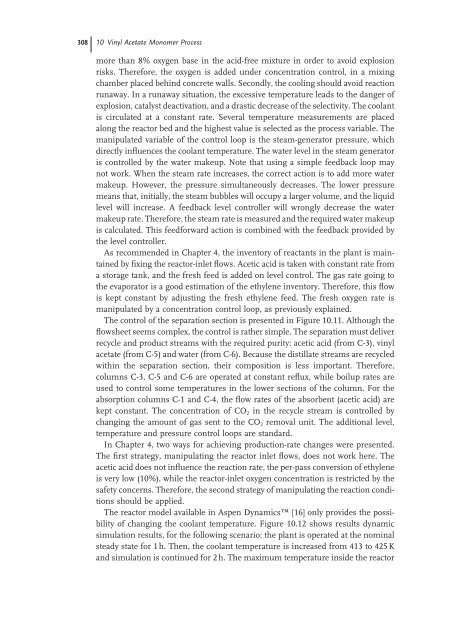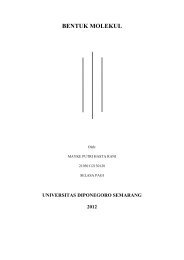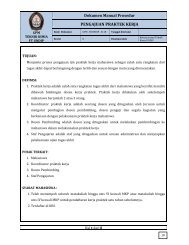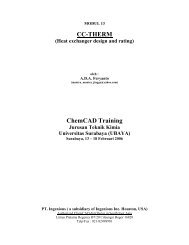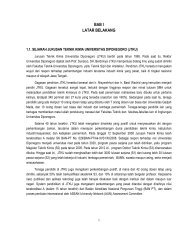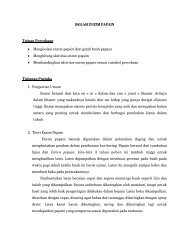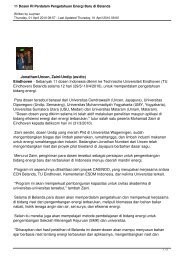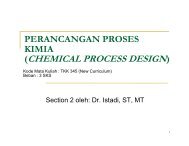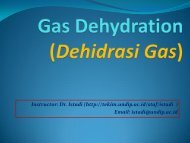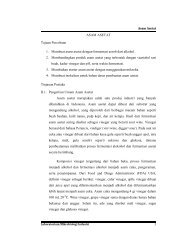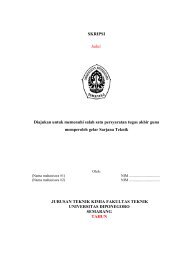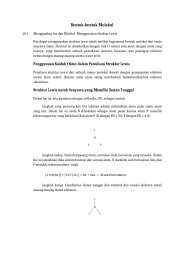Vinyl Acetate Monomer Process 10
Vinyl Acetate Monomer Process 10
Vinyl Acetate Monomer Process 10
You also want an ePaper? Increase the reach of your titles
YUMPU automatically turns print PDFs into web optimized ePapers that Google loves.
308 <strong>10</strong> <strong>Vinyl</strong> <strong>Acetate</strong> <strong>Monomer</strong> <strong>Process</strong><br />
more than 8% oxygen base in the acid - free mixture in order to avoid explosion<br />
risks. Therefore, the oxygen is added under concentration control, in a mixing<br />
chamber placed behind concrete walls. Secondly, the cooling should avoid reaction<br />
runaway. In a runaway situation, the excessive temperature leads to the danger of<br />
explosion, catalyst deactivation, and a drastic decrease of the selectivity. The coolant<br />
is circulated at a constant rate. Several temperature measurements are placed<br />
along the reactor bed and the highest value is selected as the process variable. The<br />
manipulated variable of the control loop is the steam - generator pressure, which<br />
directly influences the coolant temperature. The water level in the steam generator<br />
is controlled by the water makeup. Note that using a simple feedback loop may<br />
not work. When the steam rate increases, the correct action is to add more water<br />
makeup. However, the pressure simultaneously decreases. The lower pressure<br />
means that, initially, the steam bubbles will occupy a larger volume, and the liquid<br />
level will increase. A feedback level controller will wrongly decrease the water<br />
makeup rate. Therefore, the steam rate is measured and the required water makeup<br />
is calculated. This feedforward action is combined with the feedback provided by<br />
the level controller.<br />
As recommended in Chapter 4 , the inventory of reactants in the plant is maintained<br />
by fixing the reactor - inlet flows. Acetic acid is taken with constant rate from<br />
a storage tank, and the fresh feed is added on level control. The gas rate going to<br />
the evaporator is a good estimation of the ethylene inventory. Therefore, this flow<br />
is kept constant by adjusting the fresh ethylene feed. The fresh oxygen rate is<br />
manipulated by a concentration control loop, as previously explained.<br />
The control of the separation section is presented in Figure <strong>10</strong>.11 . Although the<br />
flowsheet seems complex, the control is rather simple. The separation must deliver<br />
recycle and product streams with the required purity: acetic acid (from C - 3), vinyl<br />
acetate (from C - 5) and water (from C - 6). Because the distillate streams are recycled<br />
within the separation section, their composition is less important. Therefore,<br />
columns C - 3, C - 5 and C - 6 are operated at constant reflux, while boilup rates are<br />
used to control some temperatures in the lower sections of the column. For the<br />
absorption columns C - 1 and C - 4, the flow rates of the absorbent (acetic acid) are<br />
kept constant. The concentration of CO 2 in the recycle stream is controlled by<br />
changing the amount of gas sent to the CO 2 removal unit. The additional level,<br />
temperature and pressure control loops are standard.<br />
In Chapter 4 , two ways for achieving production - rate changes were presented.<br />
The first strategy, manipulating the reactor inlet flows, does not work here. The<br />
acetic acid does not influence the reaction rate, the per - pass conversion of ethylene<br />
is very low (<strong>10</strong>%), while the reactor - inlet oxygen concentration is restricted by the<br />
safety concerns. Therefore, the second strategy of manipulating the reaction conditions<br />
should be applied.<br />
The reactor model available in Aspen Dynamics [16] only provides the possibility<br />
of changing the coolant temperature. Figure <strong>10</strong>.12 shows results dynamic<br />
simulation results, for the following scenario: the plant is operated at the nominal<br />
steady state for 1 h. Then, the coolant temperature is increased from 413 to 425 K<br />
and simulation is continued for 2 h. The maximum temperature inside the reactor


